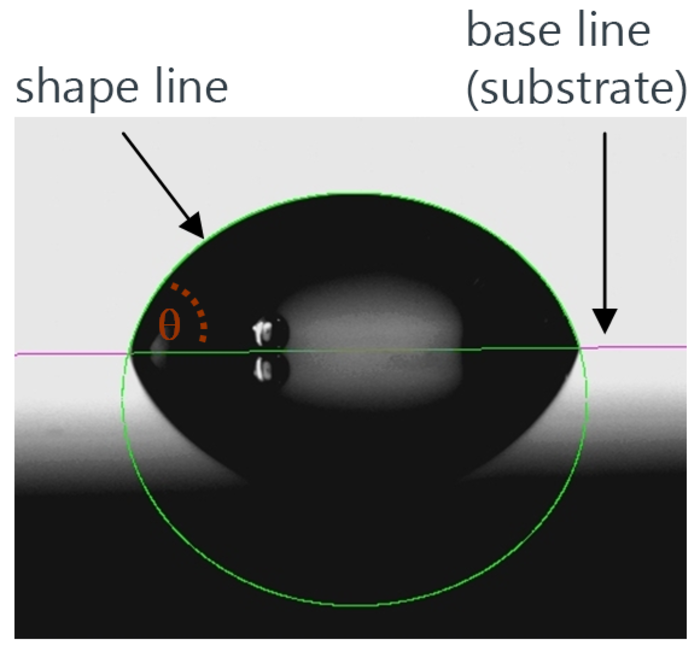Drop shape analysis
Drop shape analysis (DSA) is an image analysis method for determining the contact angle from the shadow image of a sessile drop and the surface tension or interfacial tension from the shadow image of a pendant drop.
Background
A drop is metered onto a solid sample (sessile drop) or is located at the tip of a needle (pendant drop). An image of the drop is recorded with the help of a camera and transferred to the drop shape analysis software. A contour recognition is initially carried out based on a grey-scale analysis of the image. In the second step, a geometrical model describing the drop shape is fitted to the contour.
Contact angle
The contact angle is given by the angle between the calculated drop shape function and the sample surface, the projection of which in the drop image is referred to as the baseline.

Several methods for determining the contact angle with different measuring ranges and applications are available when modelling the drop shape:
| Circle method | Conic section method | Polynomial method | Young-Laplace-Fit | |
|---|---|---|---|---|
| Assumed drop shape | Circular arc | Ellipse | No prior assumption | Ideal sessile drop oblated by its own weight |
| Recommended Measuring range | ||||
|
0 to 20° |
X | |||
| 10 to 100° | X | X | X | |
| 100 to 180° | X | X | ||
| Drop weight (Volume x Density) | ||||
| small | X | X | X | X |
| large | X | X | X | |
| very large | X | X | ||
| Dosing | ||||
|
Static (contour without needle) |
X | X | X | X |
|
Dynamic (contour with needle) |
X | X | ||
| Contour shape | ||||
| Symmetrical | X | X | X | X |
| Slightly asymmetrical | X | X | ||
| Highly asymmetrical | X | |||
Tab. 1: Samples under investigation
Surface Tension
The surface tension is always calculated with the help of a Young-Laplace fit to the contour of a pendant drop determined by image analysis. The image scale and the difference in density between drop phase and bulk phase must be known for this (for more information, see under pendant drop).




